Medieval Coats Of Arms Were Way Sillier Than You'd Think

Is there anything nobler than a coat of arms? Imbued with ancient privileges, traditions, and language (What's a saltire? Nobody knows), heraldry establishes that you come from a long line of exceptional people -- or people exceptionally good at burning and pillaging, at least. As a literal status symbol, coats of arms are also pieces of pageantry, replete with strong imagery symbolizing a house's power, like a proud lion, or a majestic eagle, or a … hang on.
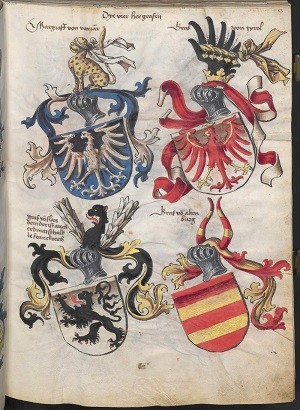
Is that a cheetah wearing a blindfold?
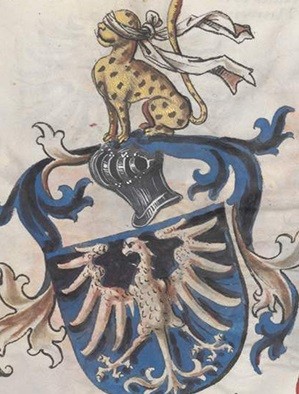
It seems that the immortal symbols of nobility don't all hold up to the same aesthetic scrutiny. The above heraldry is taken from the pages of Konrad Grunenberg's Wappenbuch (Book of Arms), a comprehensive collection of coats of arms commissioned as a gift to the Holy Roman Emperor, Frederick III, in 1480. The book is a real Who's Who of the HRE, listing the arms of its nobles, important burghers but also foreign kings. It's also a collection of who could think up the goofiest symbols, like a fish with a trumpet for a nose ...
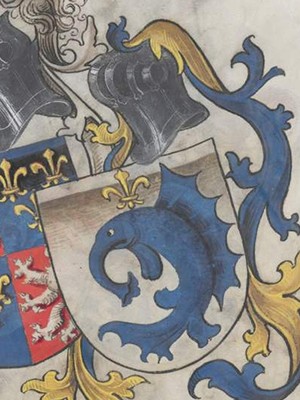
Or just the laziest. Like the Count of Hoya, a proud Saxon house that just slapped some bear limbs on a blank shield and called it a day.
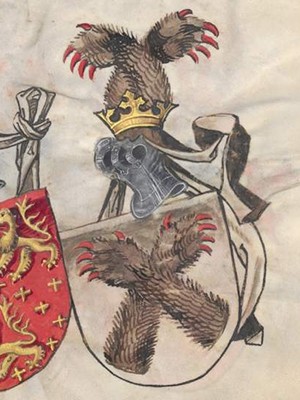
As you can tell, the crest (the bit on top of the helmet) is often more elaborate and eccentric than the shield itself. This is very particular to German heraldic culture, which placed a lot more importance on armigers to wear these weird mascots on their actual helmets during tournaments. And the more outlandish the design, the easier everyone would remember your performance. Nobody's going to forget the knight balancing a woman with fish for arms on his head …
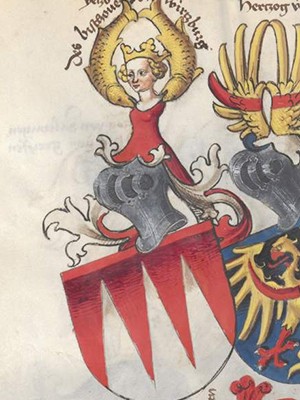
Or the one who's sporting an evil snake (a biscione) eating a flayed man alive, a coat of arms that must save your family loads on black armor.
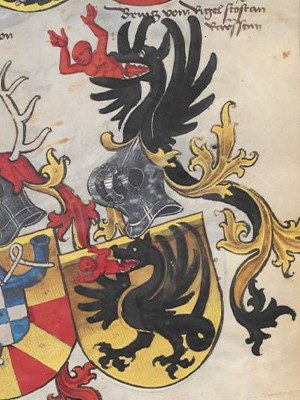
Though it's not always good to stand out. After all, how famous do you want to be as the house that had their noble lion sticking out its tongue like it's photobombing its own coat of arms?
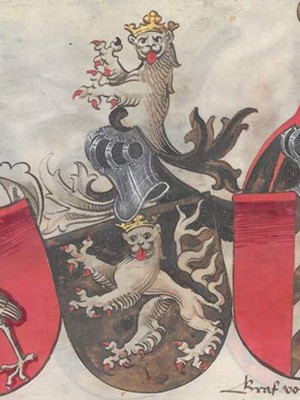
Or maybe your ancestor decided to spruce up his boring old shield with a pair of giant rabbit ears, and you're tired of being called House Bunny by the other knights.
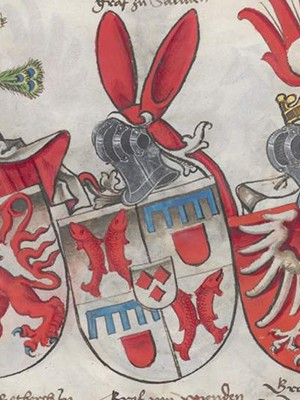
And I don't see many noble ladies eagerly giving their favor to one of the Knights of the Traffic Cone.
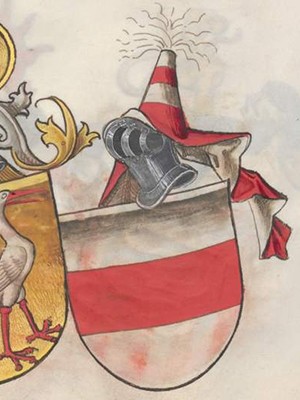
The 15th century, in particular, was a very good time for outlandish coats of arms. Many European kingdoms started allowing their richest burghers to establish heraldry. And they went arms crazy, using them for extreme personal branding. That's how you get naval merchants with crab pincers sticking out of the top of their heads …
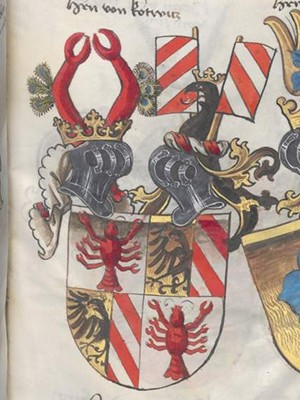
Or livestock barons with the world's least intimidating ram ...
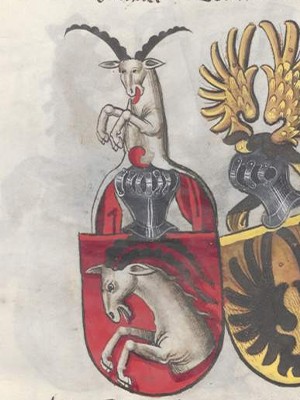
Or, um, whatever business you're in that deals with lion-bear hybrids staring at a Macbook spinning beach ball of death with its own face on it.

But take these depictions of heraldry with a grain of salt. While some goofy images are just ancient iconography lost in translation, other depictions seem to be part of patron Konrad Grunenberg's subtle shade-throwing. It's not coincidental that the emperor's quarrelsome client nations, the rival kingdoms of Dalmatia and Croatia, are positioned in a way that looks like they're trying to kill each other.

Or how the crest of one count just happens to be stabbing another's shield from underneath -- with its wide-eyed dog crest looking exactly how you'd look after taking a sword up the escutcheon.
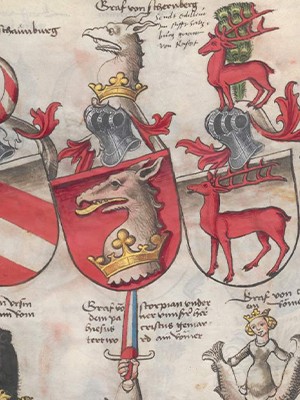
This political bias becomes particularly obvious when inspecting the coats of arms of non-Christian rulers. Did these "heretic" kings even have Eurocentric heraldry? Nope, which is why theirs seems to have been made up on the spot by petty Christians. Pretty sure no self-respecting African king would choose as a royal symbol a cowardly snake wearing a crown of even more cowardly snakes.
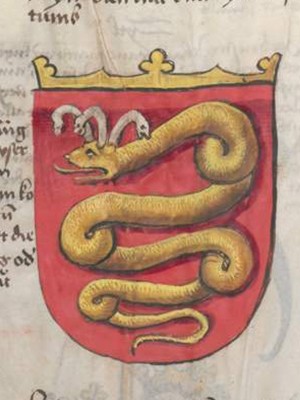
Or that the Jewish "King of Bethlehem" would portray himself as a cloven-hoofed bull with golden horns (a two-for-one deal on heretic iconography) with a face that wouldn't look out of place on a Nazi propaganda poster.
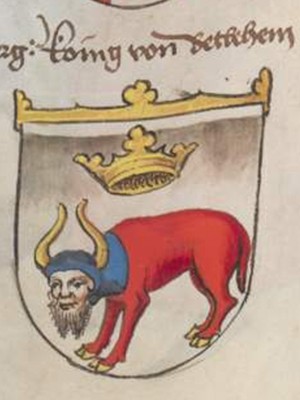
But that's just my conjecture. Maybe all of this heraldry is 100% historically accurate. Maybe the Chernobyl disaster really did blast a Make-A-Wish-Kid back to the past, and he used his tiny mutant arms to take over the non-existent Middle Eastern kingdom of "Srbillen."
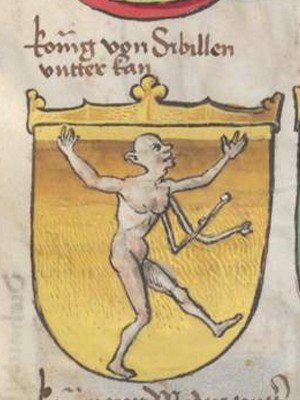
For more epic Medieval branding fails, do follow Cedric on Twitter.
Top Image: Konrad Grunenberg